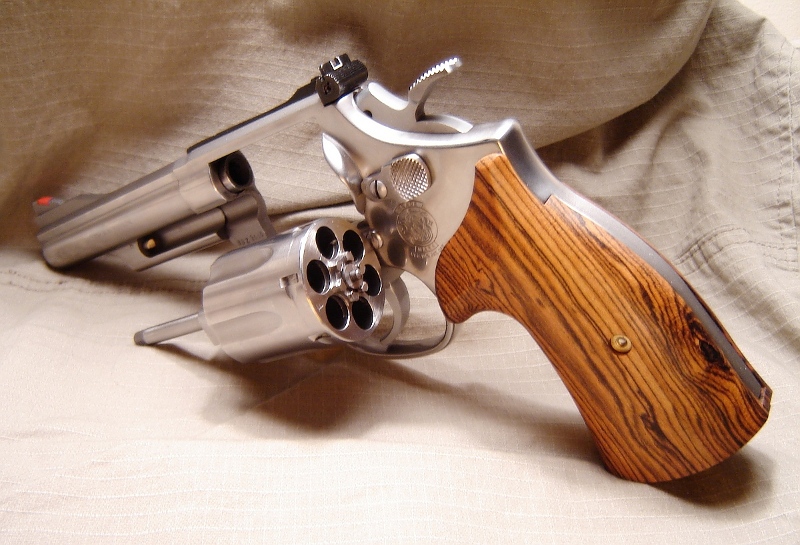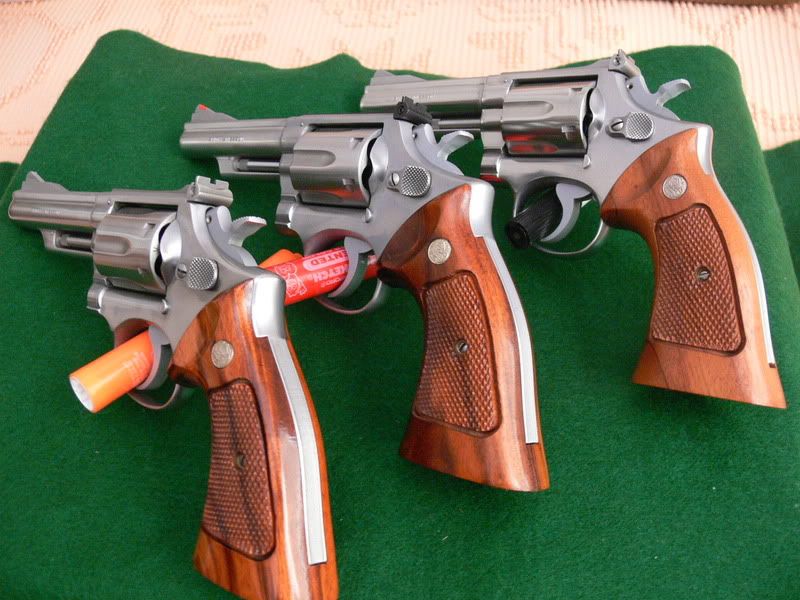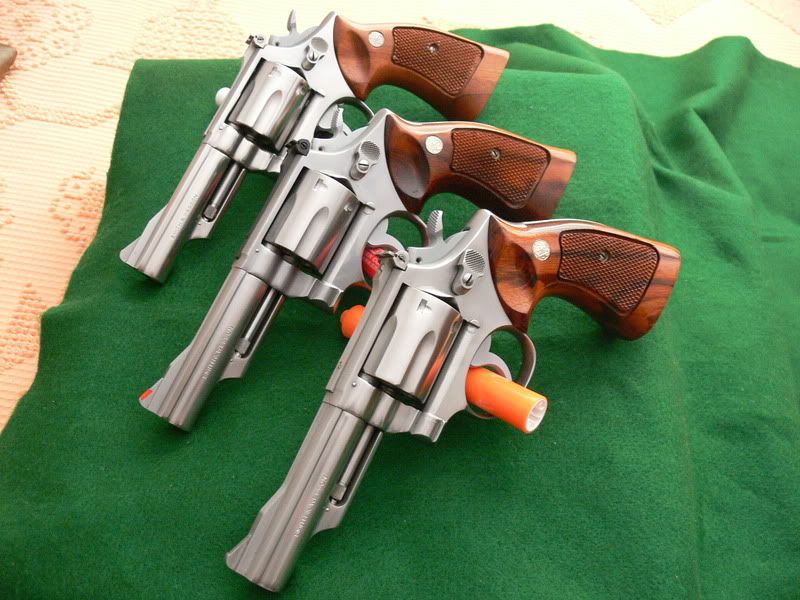For 20 plus years there was nothing vague about the hundreds of magazine articles and hundeds of K frames sent back to S&W addressing the strength of K frames standing up to a regular diet of .357 pressures.
And here we go around the same tree again. In the same 20 year timespan that you're talking about, something also happened to .357 Magnum ammunition: lightweight 110 and 125gr bullets became popular. The issues with K-Frame Magnums only came to the forefront beginning in the 1970's. If the K-Frame was never strong enough to stand up to full-power .357 Magnum ammo, regardless of bullet weight, I'd think someone would've realized it well before the 1970's. It was only when the lightweight variants of the .357 Magnum cartridge became popular, variants that the K-Frame was never designed for, that problems began to occur.
S&W never dropped their line of N frames in .35 caliber and Ruger got their foot in the door with the Sixs due in large part to the durability magnum factor as compared to the popular K frame. Would you like a L frame to go along with your Starbucks?
And what's the key difference between S&W K-Frames and all of those revolvers, as well as a few others you didn't mention? The answer is of course the forcing cone. The weak point of the S&W K-Frame is and has always been the flat spot on the forcing cone in the 6 o'clock position and, as was explained in the link I provided, it's only a weakness with lightweight bullets. All of the revolvers you mentioned have full-thickness forcing cones all the way around and thus don't suffer the same issues with lightweight bullets. If the K-Frame simply were not big and burly enough to handle .357 Magnum pressure regardless of bullet weight, then several other revolvers that have proven capable of doing just that wouldn't be either. The Ruger Six Series is remarkably similar in size and weight to a K-Frame to the point that many holsters designed for one will fit the other very well. Likewise, the Ruger SP101 and S&W J-Frame Magnums, which were both introduced well after the K-Frame's issues were known and publicized, are substantially smaller and lighter yet they still hold up to .357 Magnum pressures just fine. The
only possible explanation for the K-Frames issues is the forcing cone geometry, and it's been thoroughly explained why even that is only an issue with lightweight bullets.
Finally, if the K-Frame were not robust enough for any flavor of full-power .357 Magnum ammunition, then why did S&W continue to make it for 50 years in just that caliber? Given that the N-Frames had been available since 1935 and the L-Frames since 1980, I'd think S&W would get tired to doing warranty work on revolvers which weren't strong enough for the caliber stamped on the barrel. Likewise, if it was known since the 1970's that the K-Frame was too slight for .357 Magnum pressures, why then did S&W begin making even smaller J-Frames which would be likely to exacerbate the issues of the K-Frame in 1999? The answer, of course, is that .357 Magnum pressures in general are not and never were issues for the K-Frame but rather the effects of very particular variants of the cartridge.
So, now it's your turn. Please explain to all of us what it is, specifically, about the K-Frame that makes it so much less capable of handling .357 Magnum pressures than other guns of similar or smaller size and weight.




